Circuits In Motion
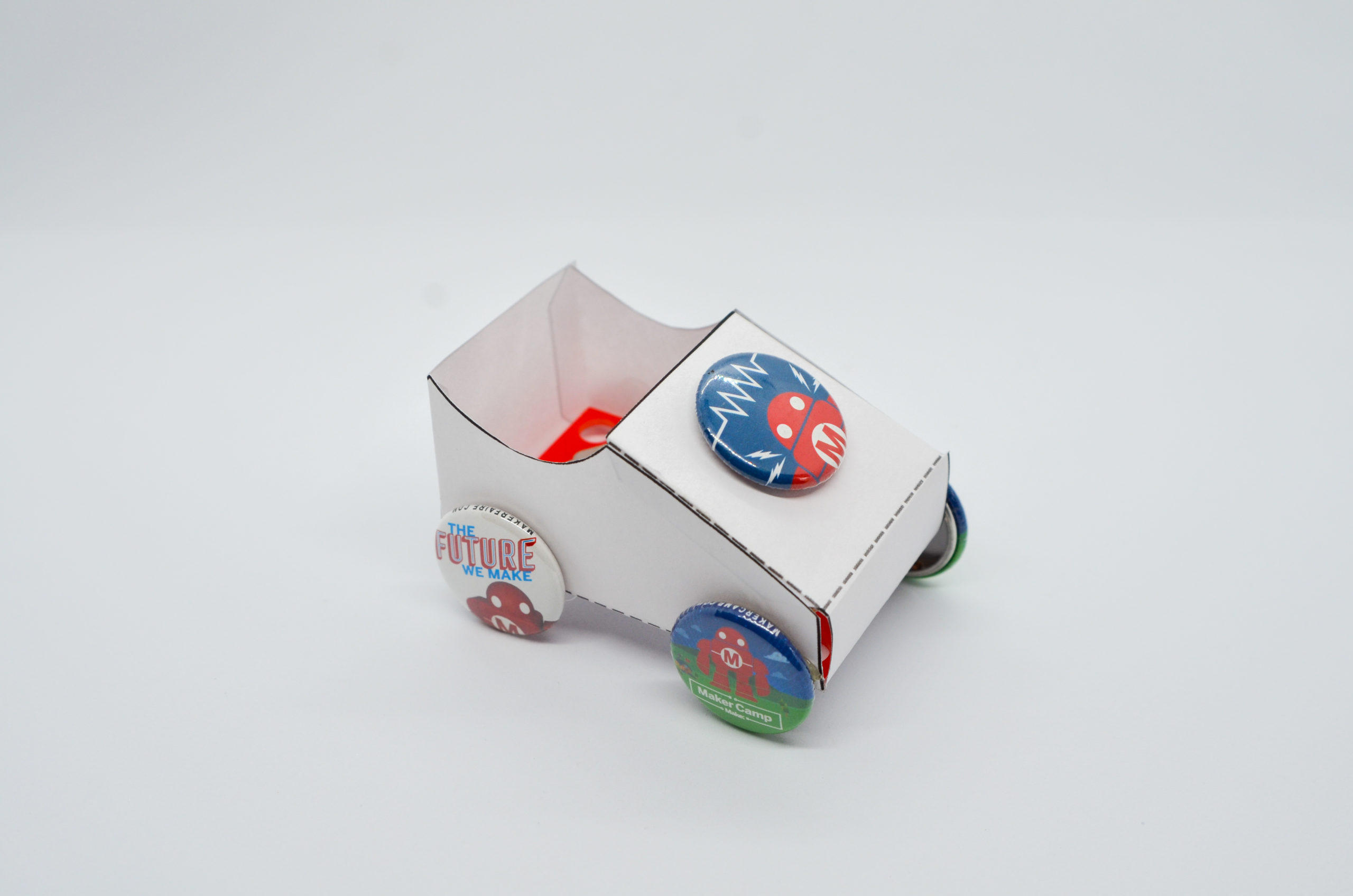
Circuits in Motion
60-90 min
Novice
Ages 8-13
What Will You Learn?
Let’s jump in and put some circuits to work.
We’ll explore circuits and make two moving paper circuits — a race car with a vibrating offset motor and a vibrobot that uses a disc motor like the ones found in cell phones.
Overview:
Campers will engage with circuits through experimentation. They’ll investigate forces and motion while using engineering skills to prototype a small race car and a vibrobot.
Objectives:
Introduce electricity as a way to power circuits that do work.
Introduce motors as potential loads for circuits.
Explore the physics of forces and motion as they apply to a simple vibrobot.

Circuit Simon Says
Let's Get Moving!
Have everyone stand up and do a “Simon Says” style of activity where campers try different types of motion — marching in place, jumping up and down, dancing, clapping, etc. Use the terms “off and on” or “closed and open circuit.”
Explain to your campers that today we’ll be making creations that use electricity to move.
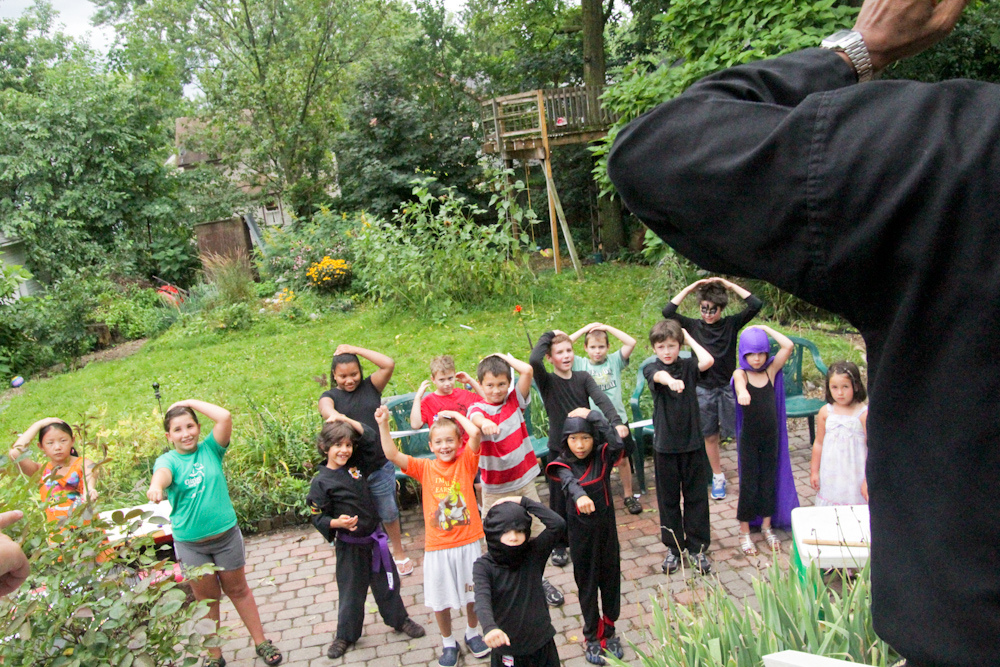
Test Your Components
Today we’ll be using circuits to power motors that set things in motion.
Step 1
Find your Shake It Board. Place a battery into your battery pack with the smooth positive side facing up. Turn the switch to “on.”
What is causing the motion? Look closely at the shaft of the motor. (Hint: Unbalanced forces! Learn more about this type of motor in the glossary.)
Build Your Paper Racer Model
Step 2
Color your race car template as desired. Assemble the paper template.
Step 3
Cut along the solid lines. Fold along the dotted lines.
Step 4
Glue or tape the tabs into place.

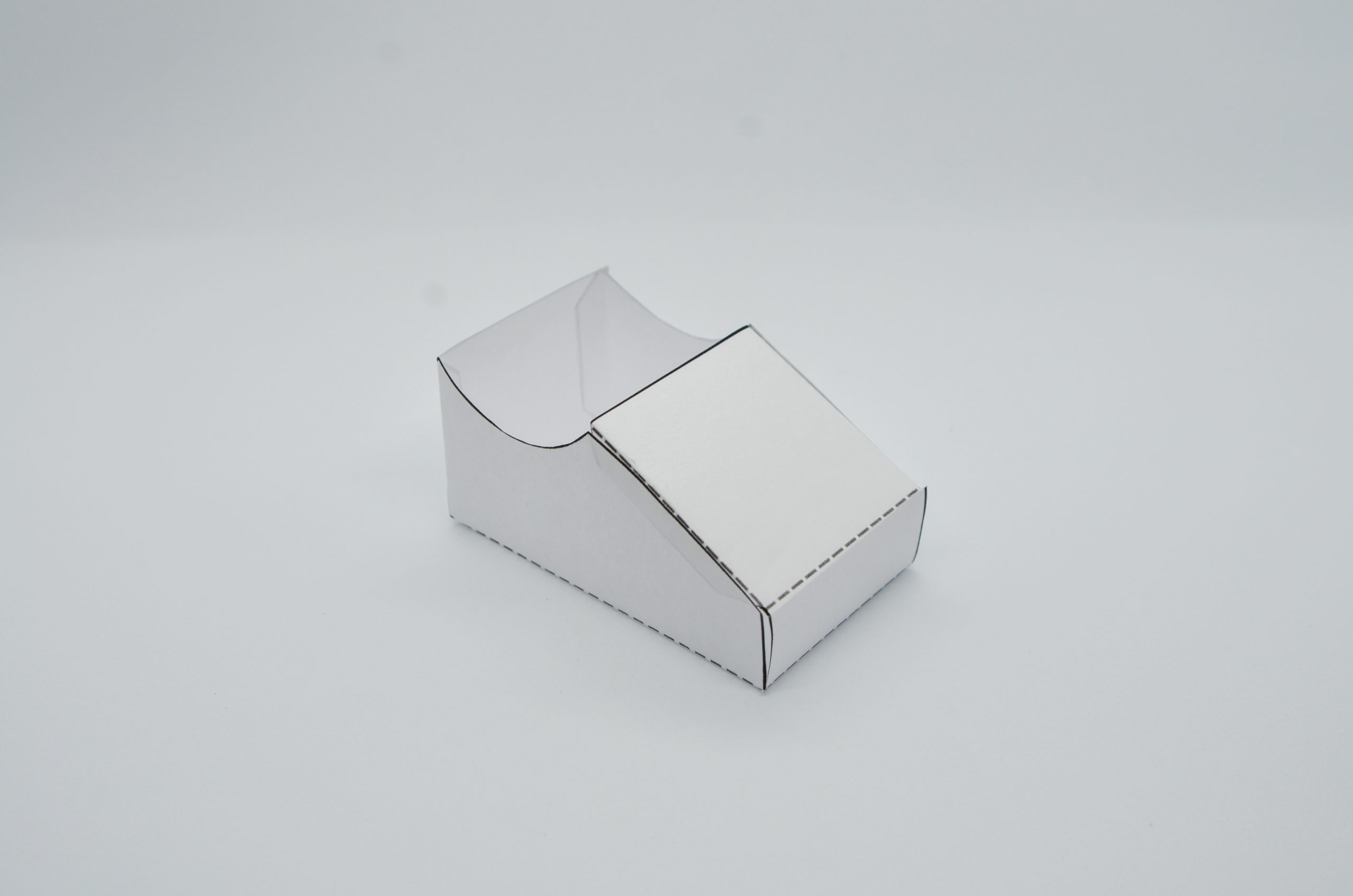
Add the Motor and Switch
Step 5
Slip the Shake It Board into the body of the racer.
Step 6
Turn on the switch. What happens? Why?
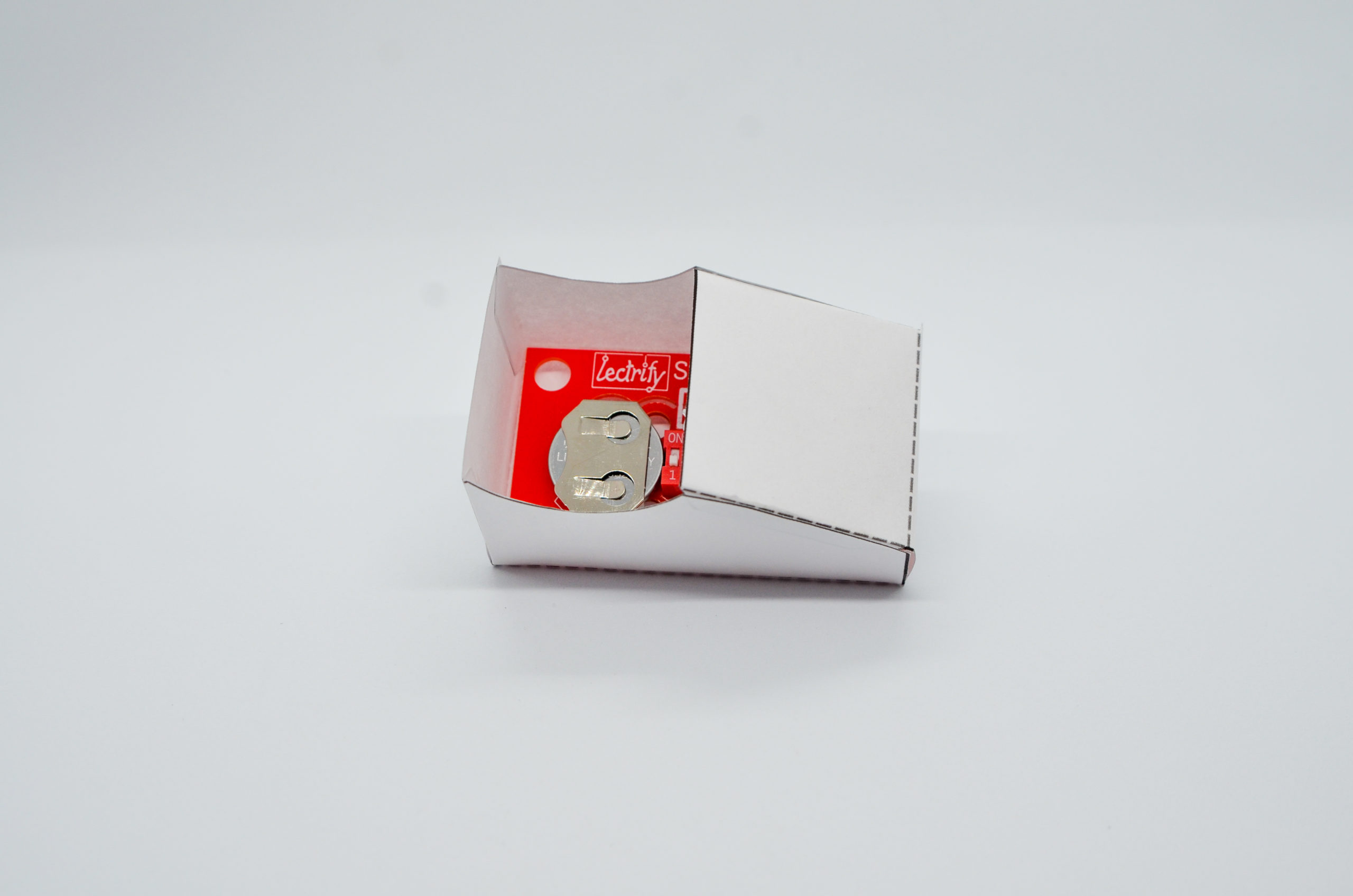
Customize!
Step 7
Gather materials such as drinking straws, pipe cleaners, paperclips, buttons, etc. Try making wheels or blades for your racer. How can you reduce friction so that the car moves more quickly? (Figure 1c, d)
Step 8
Try adding weight to different parts of the car to see how it affects the motion. Does the weight of the car affect the motion? How? Why?
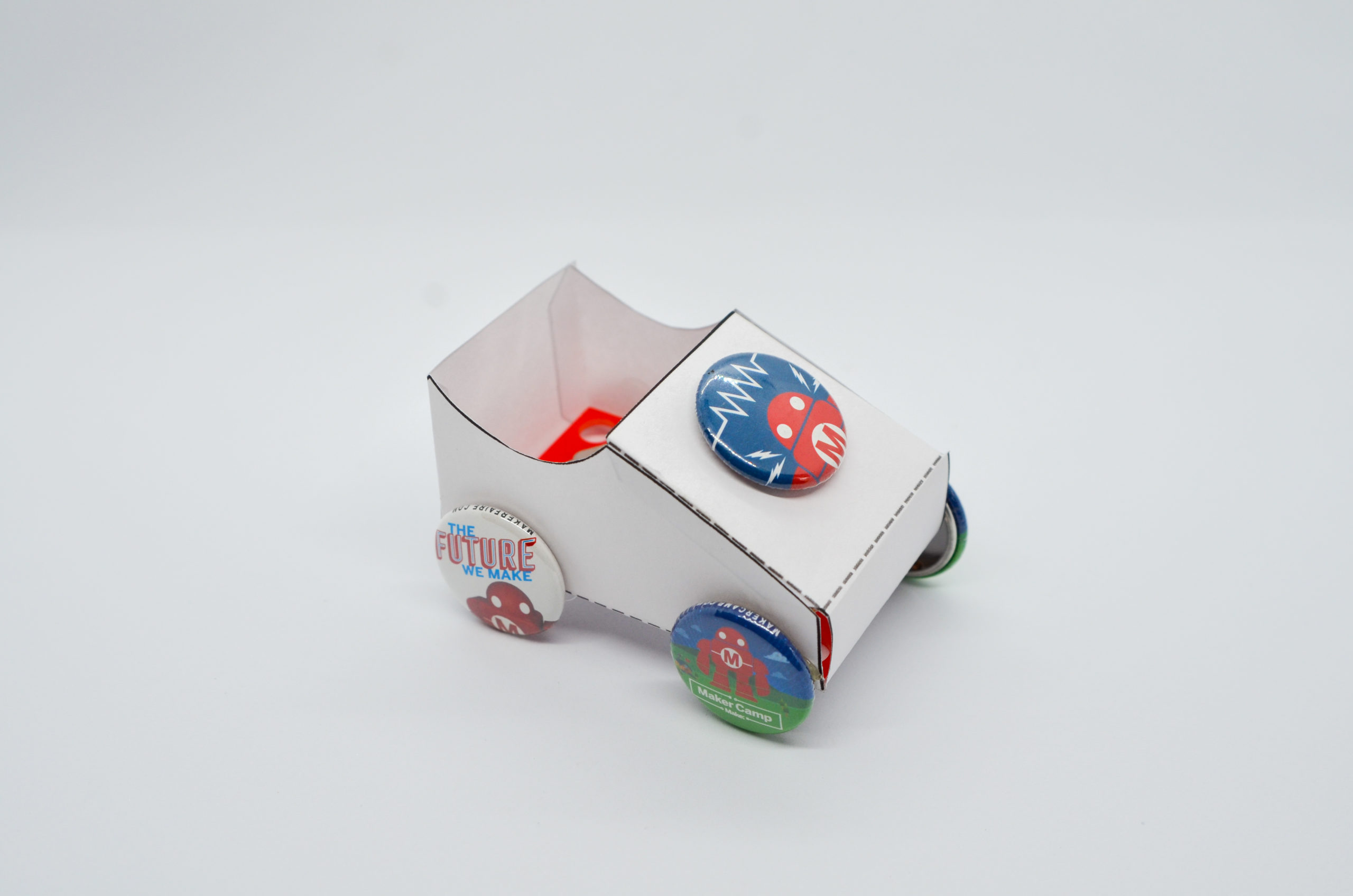
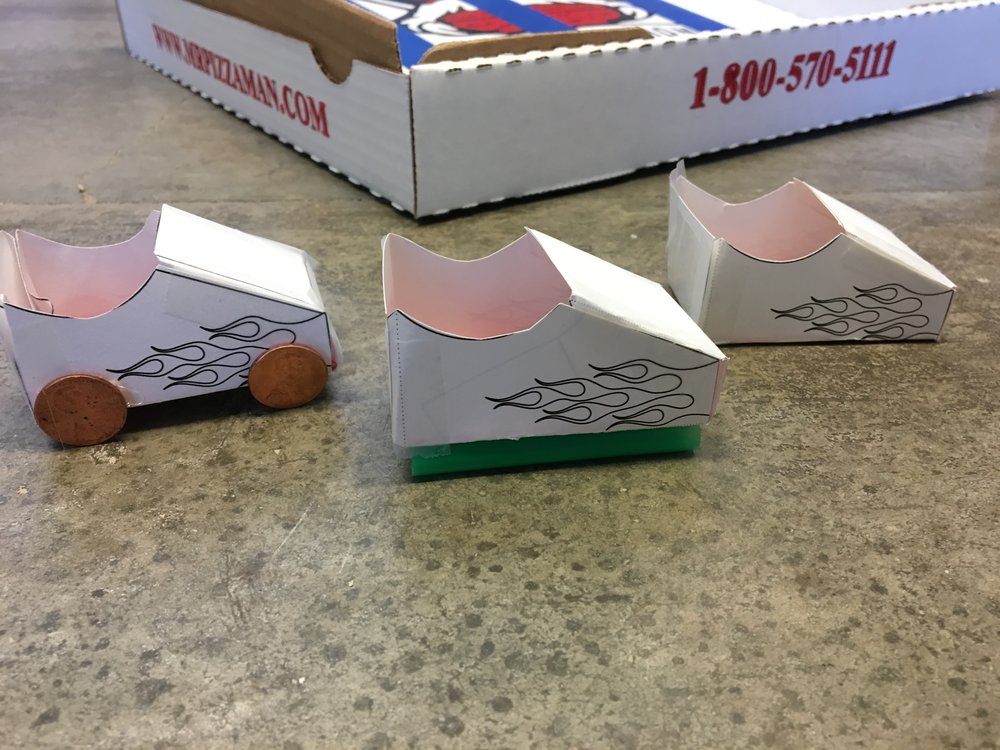
Build Your Vibrobot Paper Model!
A vibrobot is a tiny robot powered by a vibrating motor, like the type found in cell phones. Let’s start by assembling the paper model.
Step 9
Color your vibrobot template as desired. Assemble the paper template.
Step 10
Cut along the solid lines. Fold along the dotted lines.
Step 11
Glue or tape the tabs into place.
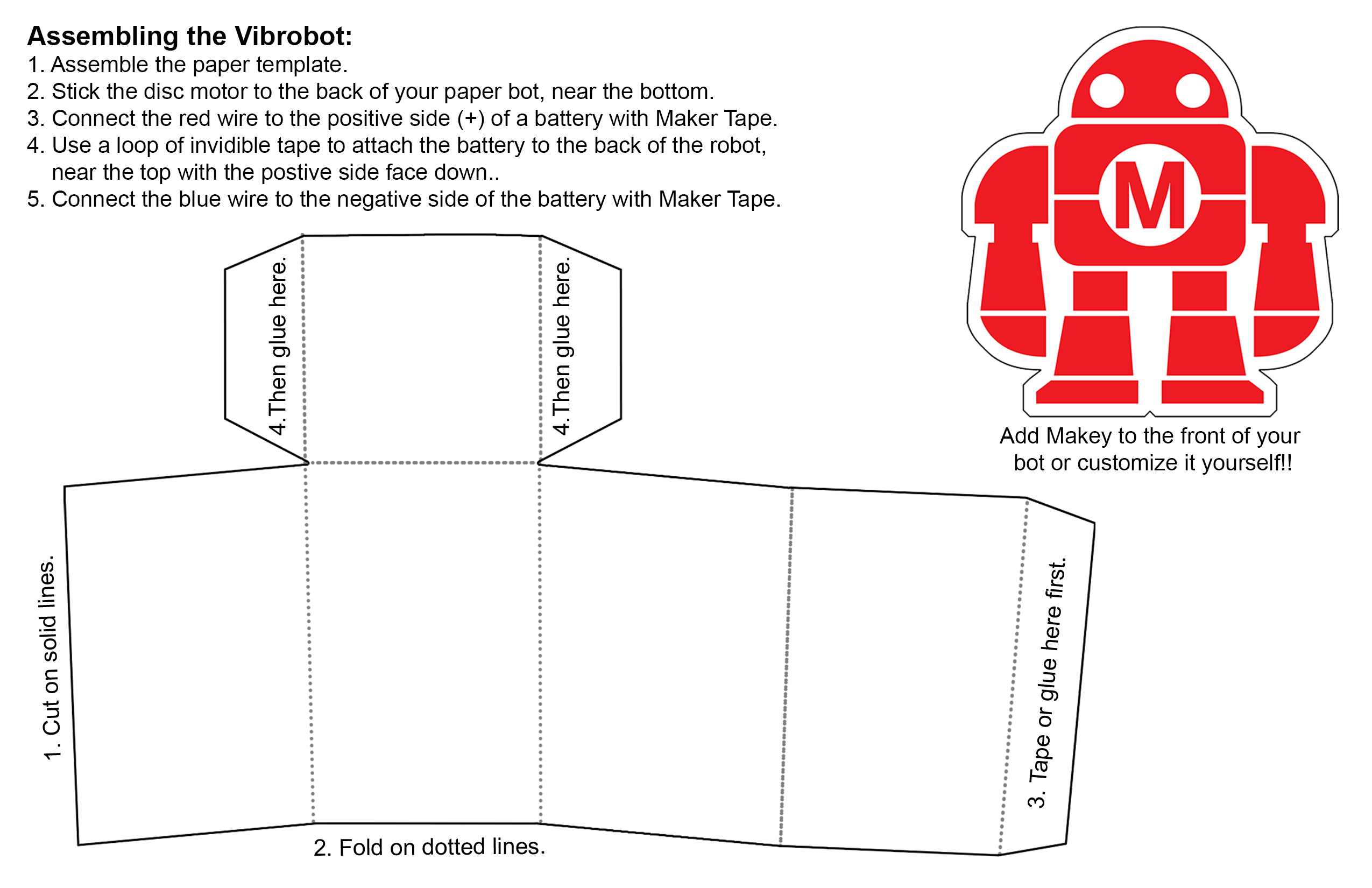
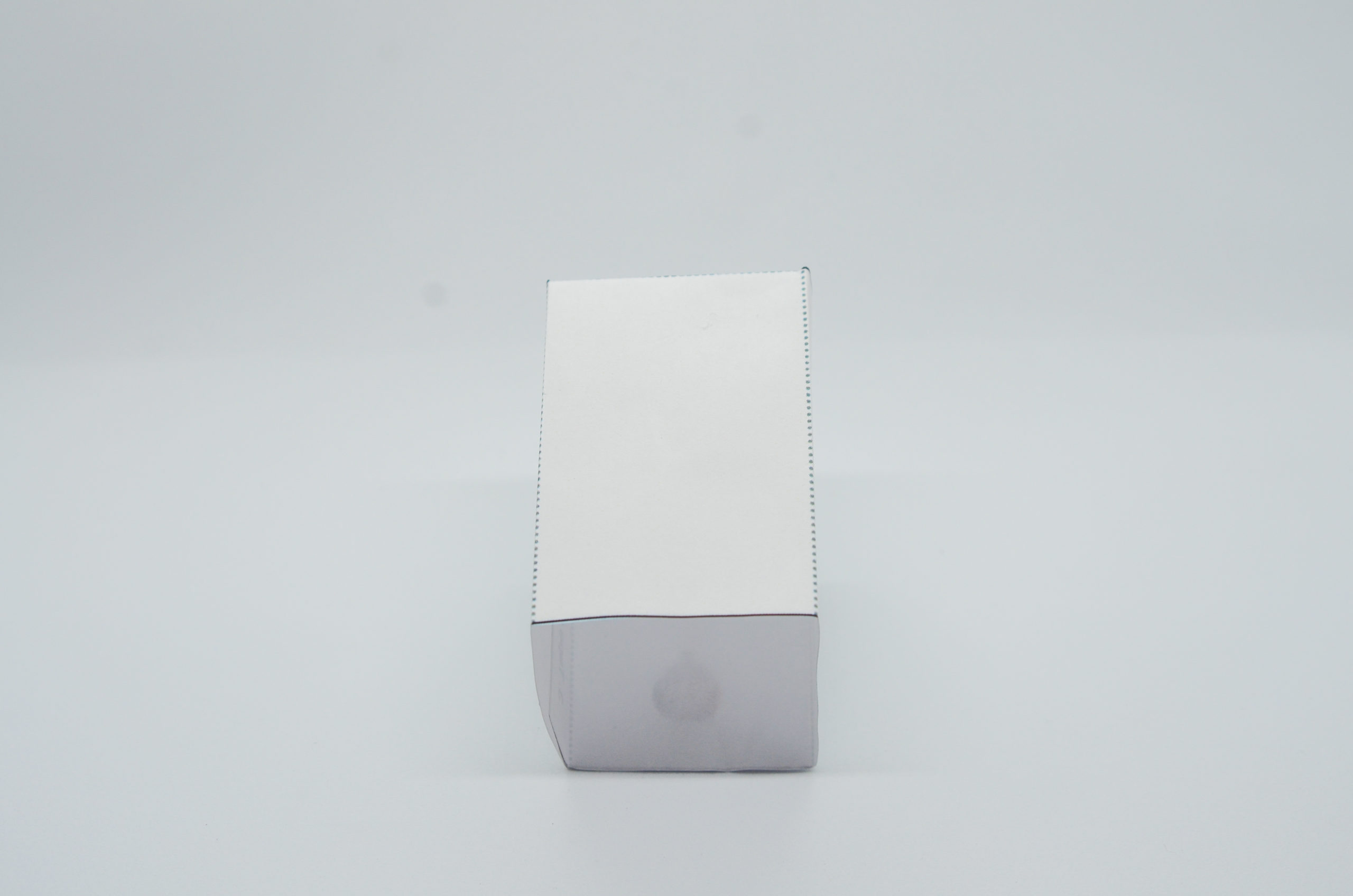
Add your Motor
Step 12
Stick the disc motor to the back of your paper bot, near the bottom.
Step 13
Connect the red wire to the positive side (+) of a battery with Maker Tape.
Step 14
Use a loop of invisible tape to attach the battery to the back of the robot near the top with the positive side face down.
Step 15
Connect the blue wire to the negative side of the battery with Maker Tape.
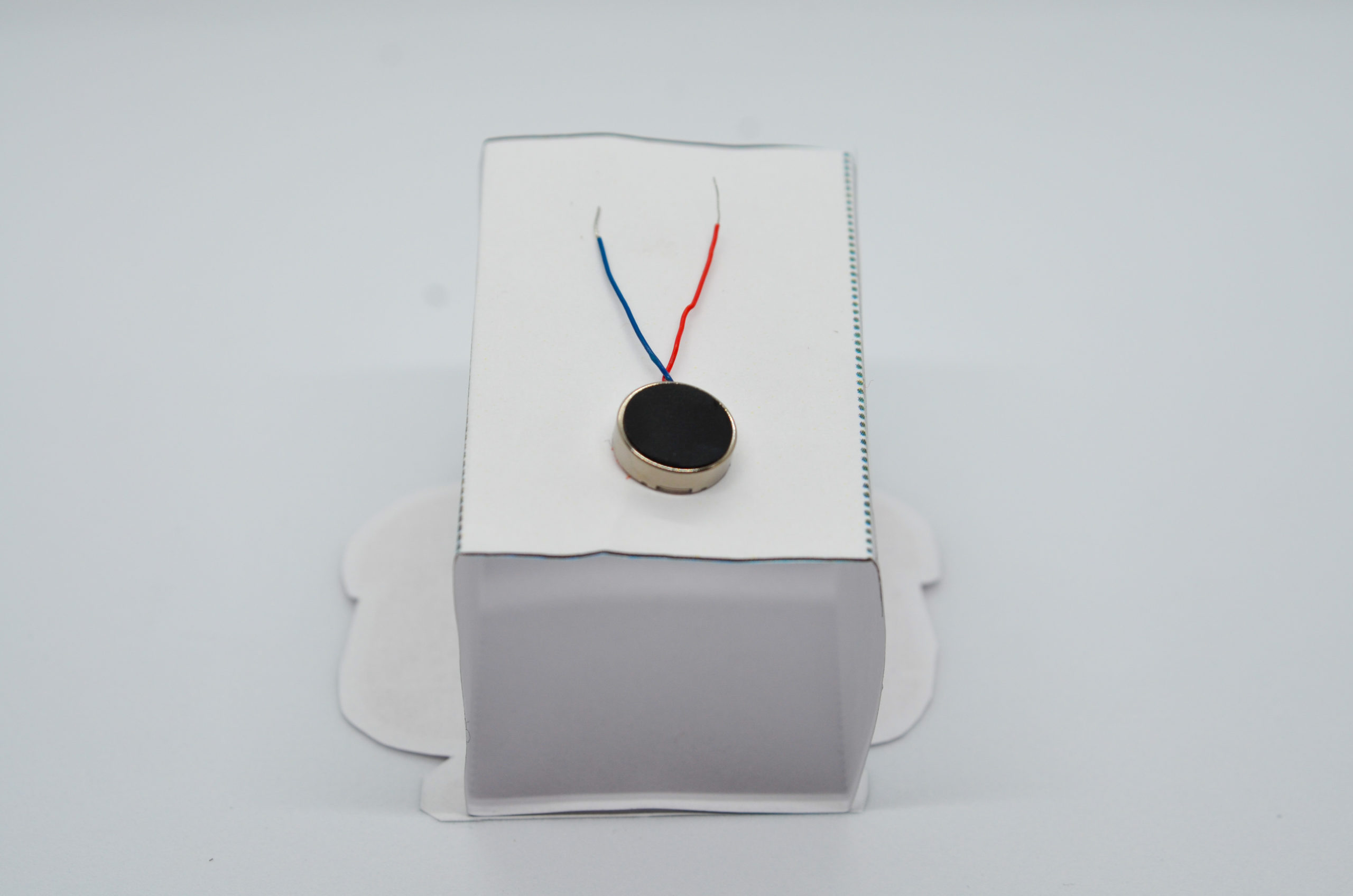
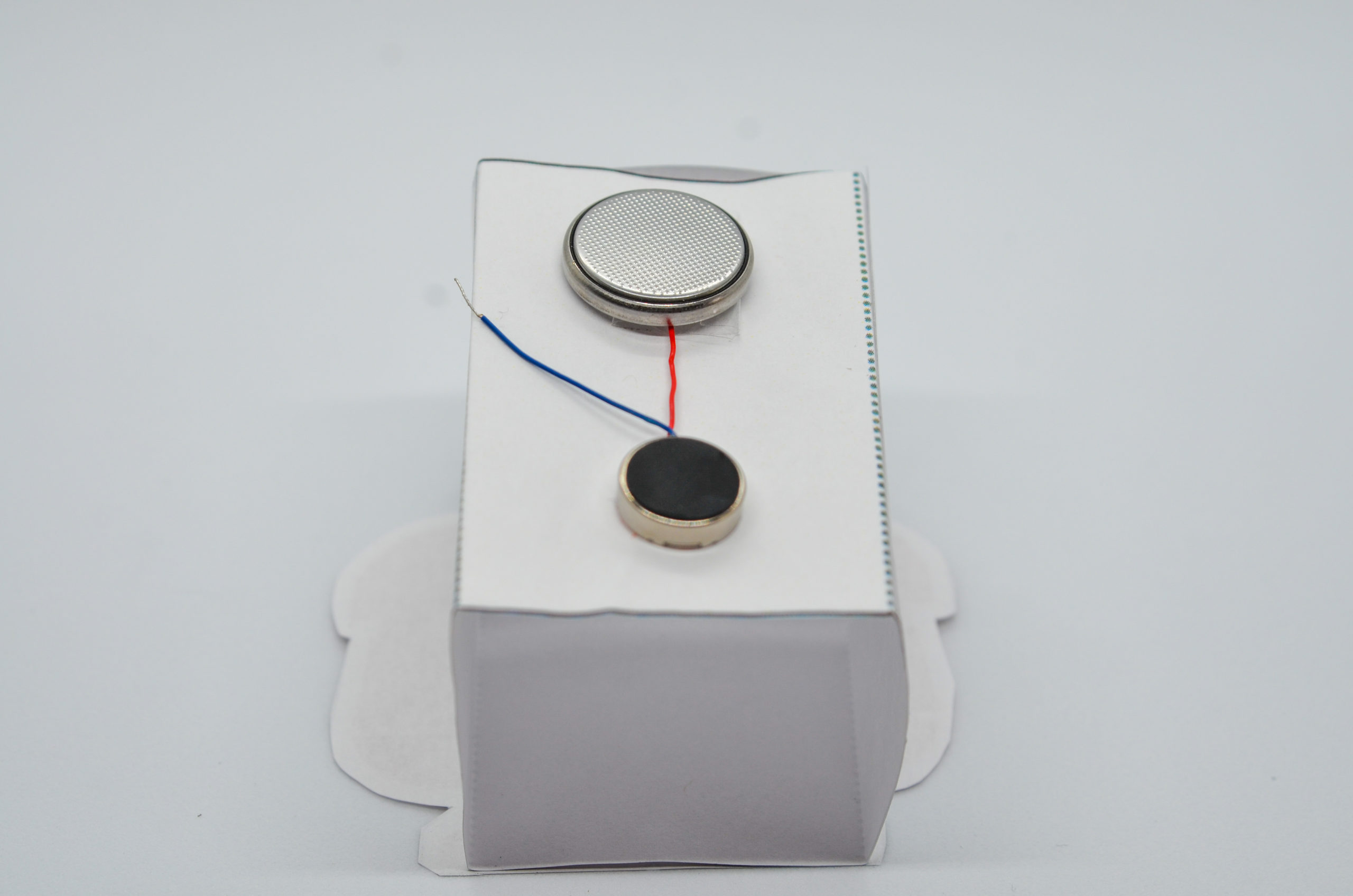
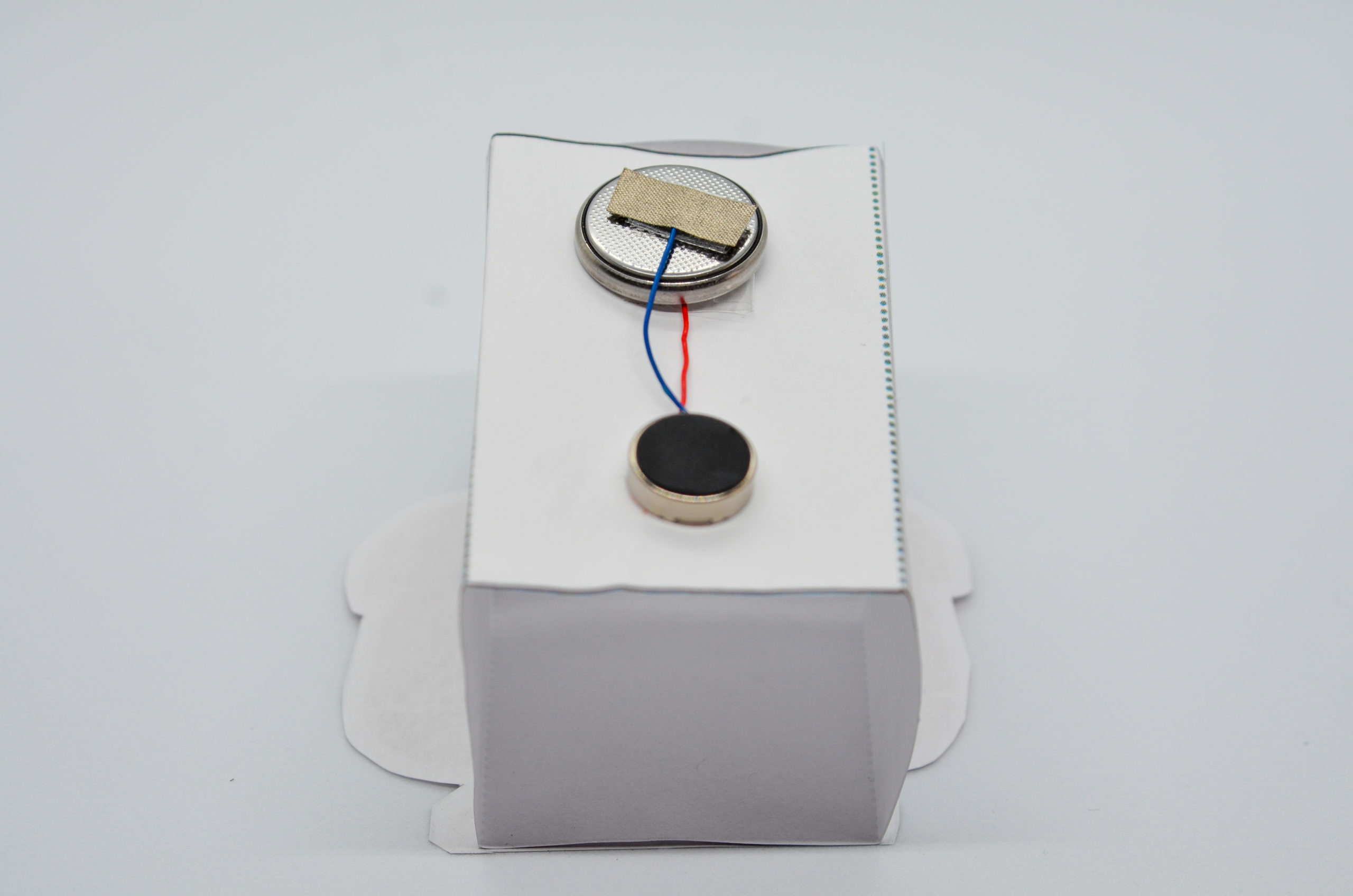
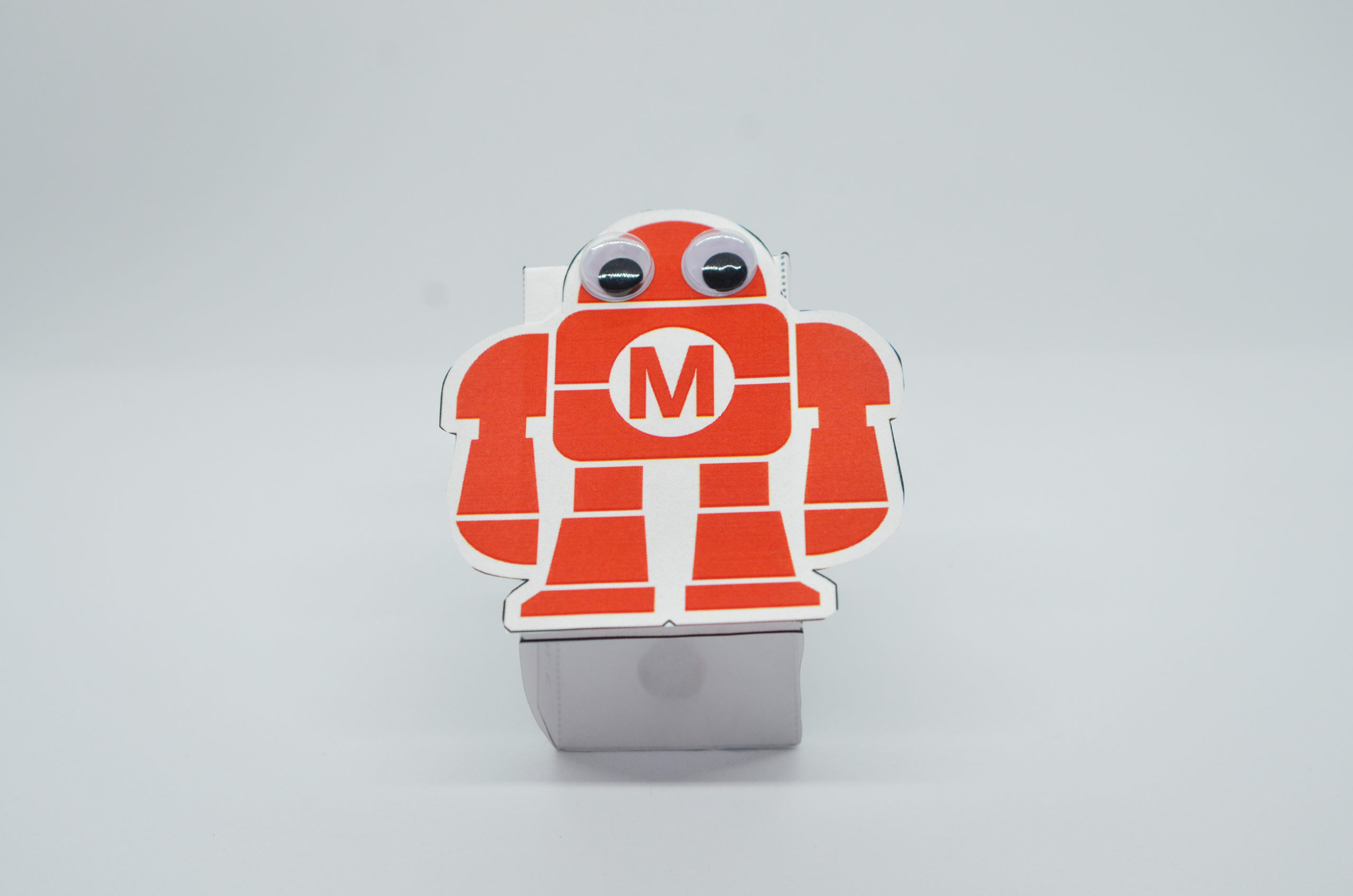
Decorate
Step 16
Decorate your bot as you like.
Try using paper clips as weight to adjust the balance of the robot and make him spin. Can you use items like drinking straws to make him move faster? Can you design a way to turn the bot on and off?
Compare
Step 17
Compare the two bots. Swap the motors between the race car and vibrobot. Which do you prefer? Why?
Try making a track for your race car or create a ring to battle your bots.
What's Next?
Build a Better Bot
Take what you’ve learned and make your creation better.
Discovery – Build a better bot! How can you improve on your vibrobot? Use these ideas as inspiration to create your own version of a vibrobot.
Exploration – Let’s draw! Use markers or colored pencils to create an art bot that scribbles on paper.
Innovation – Build beyond the bot. Can you invent a bot to accomplish a task, like mopping a floor, entertaining a pet, or mixing up salad dressing?
Take It Further
Have more time and looking for challenge?
Try creating an origami circuit that moves, like this Origami Ladybug VibroBot or Origami Spider Vibrobot.
Need more inspiration? Visit our Make: Projects Gallery for more ideas.
Share Your Bot
Let’s share what we’ve learned!
Invite campers to share their creations.
Which motor do you prefer and why? What other motors can you think of in your daily life? What power source do they use?
What kinds of inventions could you create with these supplies?
Encourage students to share their creations with their families at home and try to teach them what they learned today.


